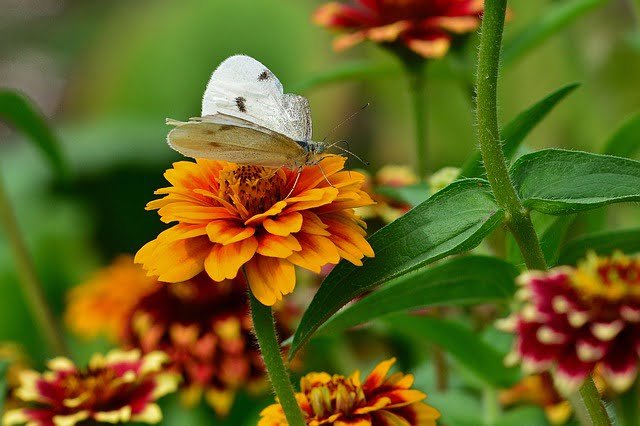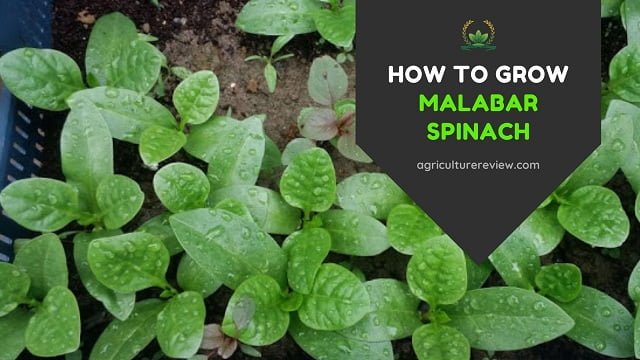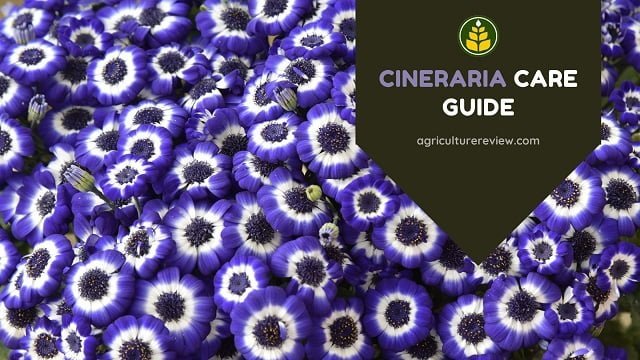This ultimate guide on zinnia care will help you to grow and care for your zinnia plant. Learn best practices to get heavy blooming in your zinnia plant.
If you love colourful flowering plant. And you want to attract butterflies in your garden then zinnia is one of the best choice. The beauty of zinnia is filled with ultimate happiness in lover’s eye.
Moreover, growing zinnia is very easy. But to get good plant performance you need to keep your plant really happy. And for this purpose I am here.
But wait, before knowing about grow and care guide, let’s know zinnia a little more.
Table of Contents
Introduction
Zinnia is not only a name for a flowering plant. But is name for a genus that belongs to daisy family Asteraceae. The name zinnia is given to honour master botanist Jahann Gottfried Zinn.
Zinnia is an annual flowering plant that is native to South Western United States. Depending on the variety they can grow from 6 inches to 4 feet tall. The unique and the most popular species of zinnia is zinnia elegans.
However, this species is bred to produce many varieties of zinnia. That’s why today we can grow many beautiful varieties of zinnia. You can easily find out single, double, or semi-flowered zinnia variety in the plant market.
How To Grow Zinnia?
To grow zinnia, we must know growing season, potting mix, pot selection, and propagation method. This will help you to germinate and grow zinnia successfully.
Growing Season
Zinnia is a summer flowering plant. It starts flowering from early summer to fall season. Spring is the best season to start germinating zinnia seeds. The ideal temperature range for seed germination is from 23 to 28 degrees Celsius.
You can easily grow zinnia in plant hardiness zones 3, 4, 5, 6, 7, 8, 9, and 10. I sow seeds during early March. At this time the temperature remains perfect for germination of zinnia seeds.
Potting Mix
Zinnia plant loves loamy to sandy loam, well drained soil that is rich in organic matter. However, the pH of the soil can be slightly acidic to neutral. But, this flowering plant can not tolerate alkaline soil.
So make sure that soil pH remains between 5.5 to 7.5. If your soil is sandy loam then you do not need to prepare any potting mix. Just add enough organic compost and your ready to begin.
But if your soil is clayey or heavy then you should prepare potting mix. Prepare an ideal potting mix with 40% garden soil + 10% river sand + 20% cocopeat + 30% any organic compost.
Selection Of Pot
You can grow zinnia in 8 to 12 inches, earthen or cemented pots very easily. Just make sure to have at least 2 to 4 drainage holes at the bottom of the pot.
Drainage holes help to prevent waterlogging condition in the pot.
Propagation
You can propagate zinnia from seed germination. Purchase high quality zinnia flower seeds from the market. You can also contact us to get high quality zinnia seeds.
Use the same potting mix to sow seeds. You can germinate seeds in germination tray as well as in any desirable container. But, make sure that the container has drainage holes.
Sow seeds by broadcasting, and cover them with a thin layer of potting mix. Apply water gently after sowing seeds. Place this germination pot under semi shade. You can also cover this pot or tray with transparent polythene.
After 3 to 5 days you will start noticing the growth of new seedlings. You can start transplanting seedlings when they reaches 4 to 5 inches in height.
Prepare potting mix, fill it in the main pot and transplant your seedlings on by one. Do not forget to apply water soon after transplantation. Keep the pot under semi shade for 5 days after transplantation.
Zinnia Care Guide
Once you are successful in germinating, then you will need to care for your plant. Knowing about sunlight, watering and fertilizer needs of the plant helps to keep them healthy.
Sunlight
Zinnia plant loves bright direct sunlight to grow. Place the pot in a spot where the plant can receive at least 5 to 7 hours of sunlight daily.
However, when the temperature goes above 35 degrees Celsius. Then provide semi shade to the plant. It will help to protect the plant from scorching sunlight.
Watering
To care for zinnia, you should keep the soil evenly moist. But avoid soggy soil or waterlogging condition in the pot. Moderate watering is good for zinnia plant. Apply water only when the top layer of the soil seems drying.
Fertilizers
Zinnia are not heavy feeders. But to grow and bloom properly it will require a little amount of fertilizer. I prefer adding only organic fertilizer in zinnia plant.
You can add a handful of any bulky organic manure like vermicompost or kitchen waste compost. Along with this also use banana or onion peel fertilizers once after every 30 days.
Do not forget to apply water after fertilizer application in the pot.
If you want to add inorganic fertilizers then you can add 1/2 teaspoon Epsom salt and potash. Also add 4 to 6 granules of DAP once after every 30 days.
But do not add plenty of fertilizers. Excess amount of fertilizers can harm this plant.
Pests & Diseases
Pests like mealy bugs, spider mites, or caterpillars can affect your plant. You can apply neem oil spray periodically to save your plant from pests.
Diseases such as powdery mildew and bacterial wilt can also affect zinnia. To prevent your plant from these disease avoid wetting leaves of the plant while watering.
Staking & Deadheading
However, dwarf variety of zinnia can grow without support but tall variety will need support to grow. Provide support to the main branch with the help of a wooden stick.
Deadheading is an important practice for healthy growth of zinnia plant. Keep removing old and dead flowers from the plant.
Author’s Note
I guess you are now clear on zinnia care guide. If you have any ideas, suggestions, or queries then you can comment below. You can also connect with Agriculture Review on Facebook, Instagram, and Koo.






